Aviation is expensive. From the cost of fuel and flight training to renting an aircraft, flying tries to suck you dry every chance it gets. One way to save a ton of dough is to get an ultralight aircraft. Ultralights are cheap to operate and don’t even require a pilot certificate. And since they are indeed ultra-light, they don’t require large, expensive engines to get aloft. Tiny, loud two-stroke engines have ruled the ultralight space for a long time, but now all-electric planes are becoming affordable. Case in point: the Aerolite EV-103, an electric ultralight that won’t absolutely obliterate your bank account. Sort of.
All-electric ultralights have been a sort of trendy thing in aviation for several years now, and electric power promises the same benefits as electric cars, but with one major pitfall. On the plus side, electric motors are lightweight, powerful, and quiet. There’s no need for leaded gas, and with the complexities of an internal-combustion engine eliminated, electric aircraft are easier to maintain.
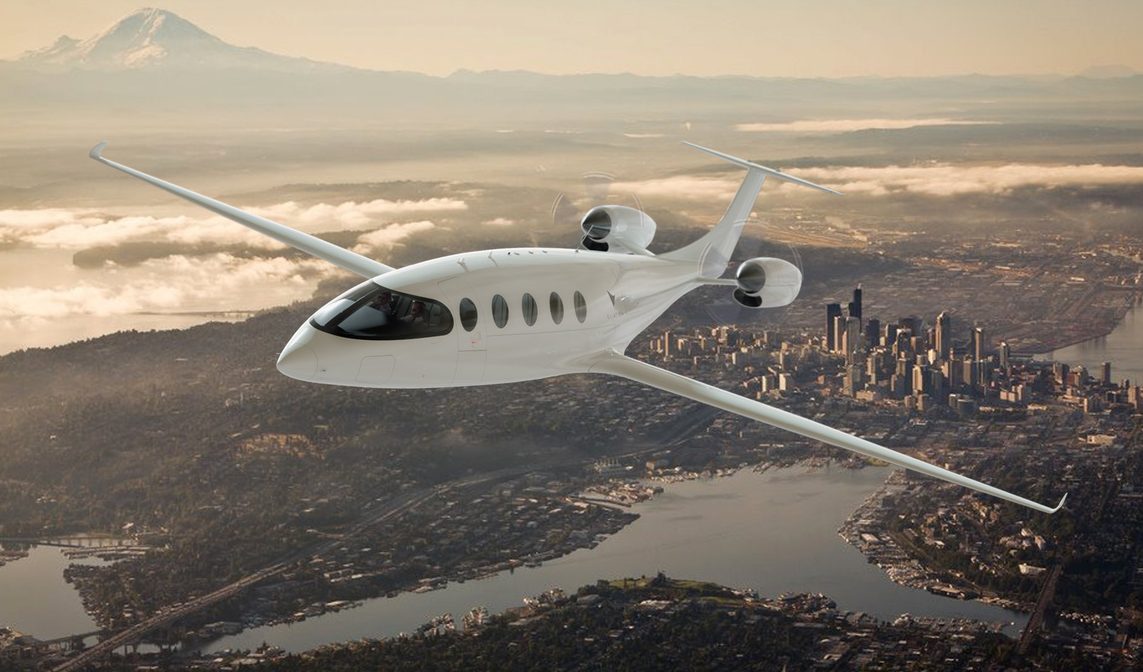
And the downside? Current battery advances do not support a truly long-distance electric aircraft. For one example, the Eviation Alice was hailed as the world’s first commuter electric airplane with a proposed range of 250 nautical miles and a seating capacity of nine at an initial proposed cost of $4 million. The Alice, which was shelved earlier this year due to internal struggles at Eviation, would be great for short hops, but even the most basic prop-driven airliners outclass it on range.
Most electric aircraft projects are designed as short-range affairs, such as air taxis and vertical take-off-and-landing (VTOL) sport craft, because of the limitations of current battery technology. And there are lots of startups with ultralight eVTOLs that some publications like to call “flying cars.” They are not, and there will never be flying cars, but that’s not my real complaint here. No, the problem I have with ultralight eVTOLs is that they’re crazy expensive.

Take the Jetson One, above. This ultralight eVTOL is in production and is more or less a flying side-by-side. It looks cool and it works as advertised, but comes at a cost of $128,000. The ultralight category is highly limited – you cannot carry a passenger, go very fast, fly into certain airspaces, or fly at night, among other considerations. $128,000 is a lot of money for an aircraft with those limitations.
If you’re lucky enough to have $128,000 burning a hole in your pocket, that will easily pay for the cost of obtaining your pilot license, the purchase of a used plane, and a rental hangar to store it, with plenty left to spend on flying. My local flight club charges $170 an hour to rent a Cessna 172. Let’s say you take a long time and burn $20,000 getting your private pilot certificate. If your budget is $128,000, you’ll still have enough money left over to fly the rental Cessna another 635 hours!
You can see why I’ve always had a problem with six-figure ultralights. The whole point of ultralight aviation is to be a cheap and accessible entry point that allows anyone to fly. But a six-figure ultralight is so ultra-expensive that you are essentially paying more to be able to do less than your friend with a Cessna 150.
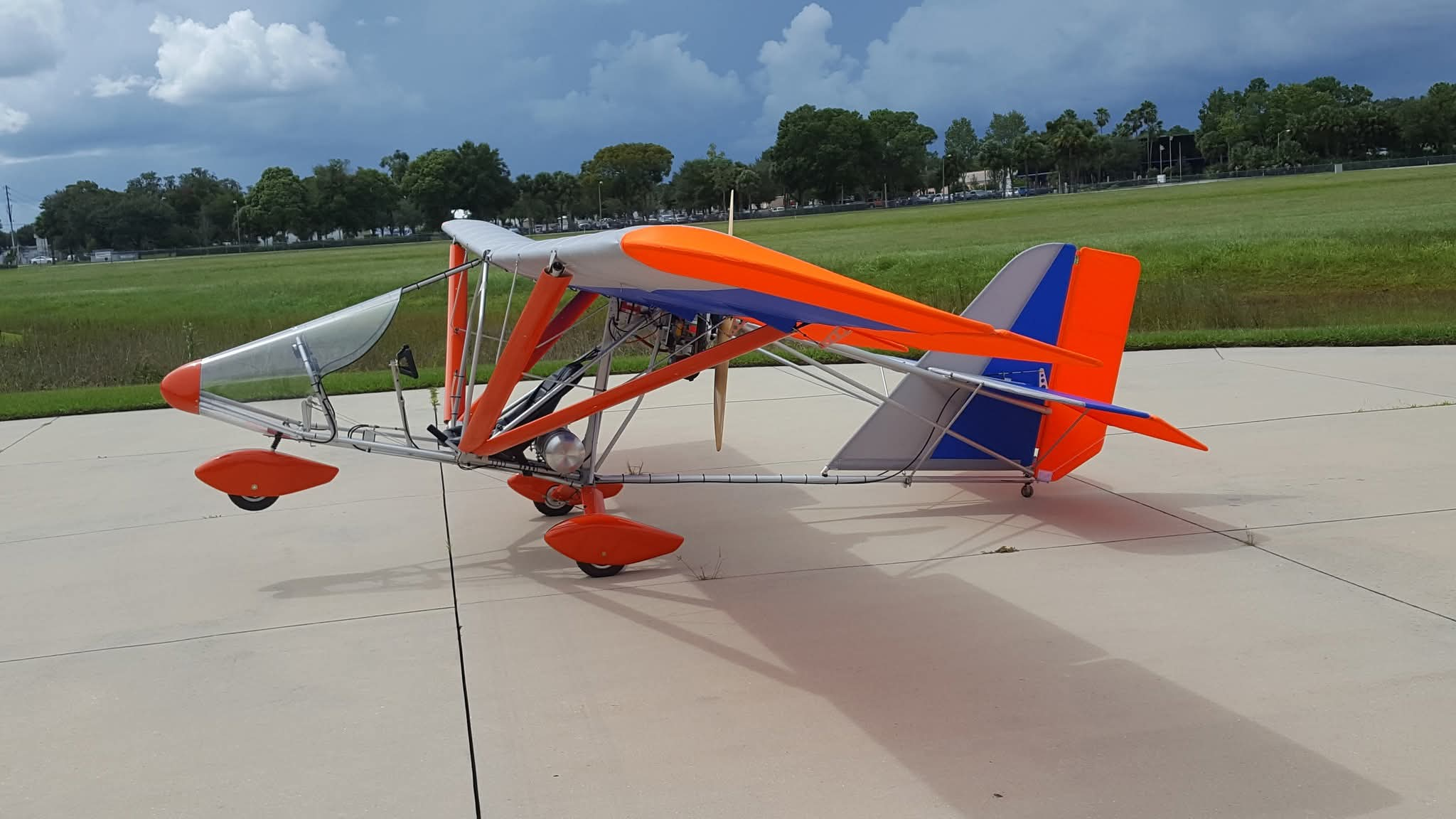
Here’s where the Aerolite (above) comes in. This plane, which is already an established line of gas-powered ultralights, now comes in a version for folks who want a quieter and emissions-free way to play, and it costs just under a third of the price of something like a Jetson. This is the Aerolite EV-103, and it’s guilt-free fun for less money than a lot of electric aircraft.
From A Big Ultralight Player
The current producer of the Aerolite EV-103 is U-Fly-It Light Sport Aircraft of DeLand, Florida. The aircraft is based on the Aerolite 103, an ultralight that’s been around for almost 30 years. U-Fly-It gives details:
The Aerolite 103 was designed by long-time aviation enthusiast Terry Raber, in 1996. Everyone in the Ultralight and Light sport industry knows Terry. The vast majority of the light aircraft flying use his Streamline Strut Fairings and Stainless Exhaust Brackets (both of which he designed back in 1993).
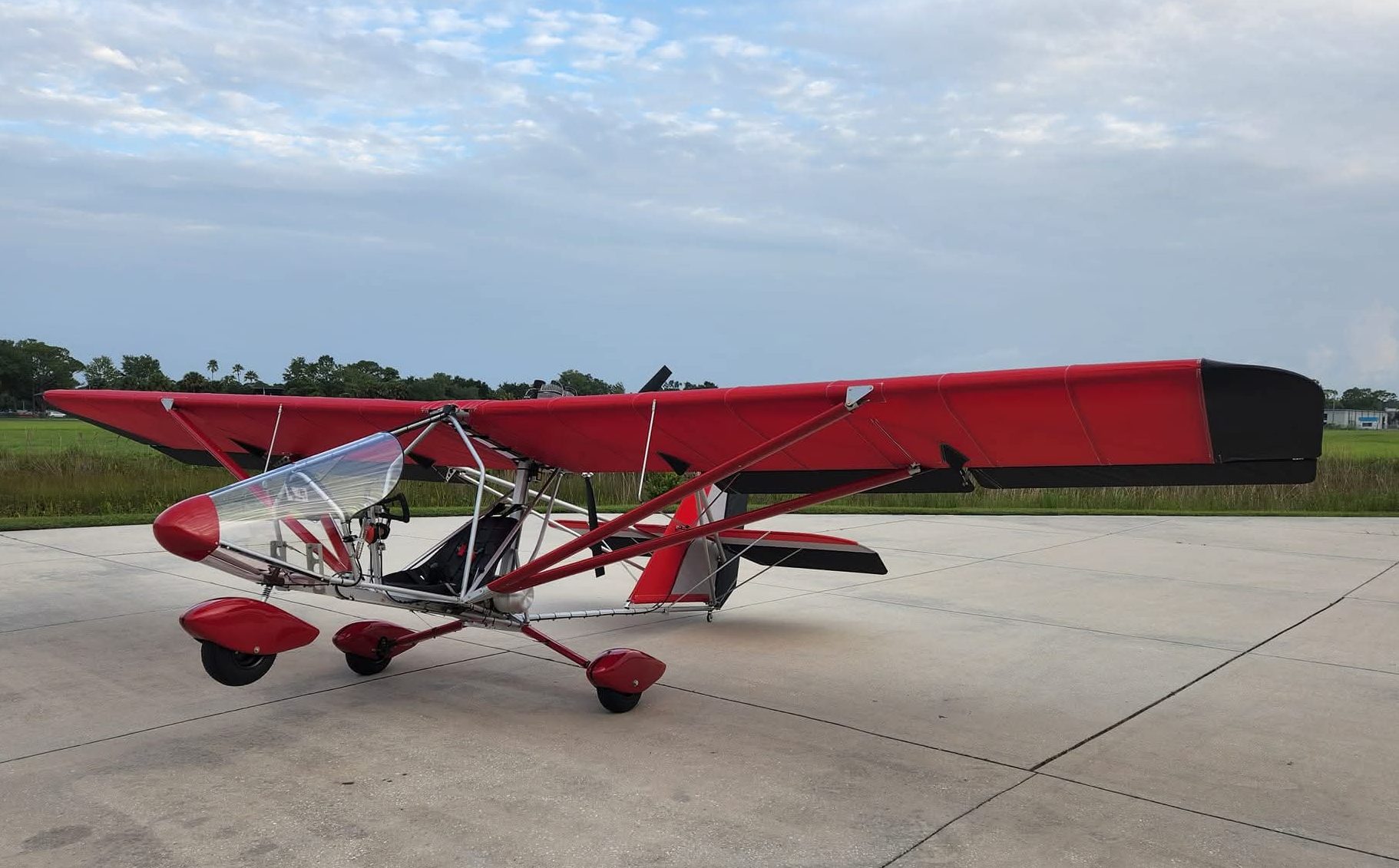
In the early 1990s, Terry was building and selling ultralights, but he always felt the perfect plane had not yet been designed. Not being one to settle for second best, he carefully studied the best features of each ultralight. Eventually, he put all the pieces together with his own refinements to produce the Aerolite 103. The first prototype Aerolite 103 flew on October 6, 1996. Testing continued while building the production prototype and the Aerolite 103 debuted at Oshkosh in 1997. The Aerolite 103 was appropriately awarded the ultimate prize of Grand Champion Ultralight. Since that day, the design has gone on to win multiple awards over the years.
Between 1997 and 2012, Terry produced hundreds of Aerolite 103s. The aircraft has always been extremely popular and highly regarded by both experienced and newer pilots alike. In 2012, Terry made the difficult decision to pursue other non-aviation business interests and decided it was time for the Aerolite 103 design to have a new home. Terry contacted U-FLY-IT Light Sport Aircraft’s owner, Dennis Carley to inquire if he had an interest in carrying on the manufacturing of the Aerolite. After a brief, yet very productive conversation, plans were implemented to facilitate the relocation of the Aerolite production facility to U-FLY-IT’s base of operation in DeLand, Florida.
In short, this isn’t an aircraft being built by a startup founded a couple of years ago, but it’s an established entry in ultralight aviation. Plane & Pilot Magazine has said that the Aerolite 103 is so popular that U-Fly-It builds about 60 of them a year, making it an ultralight top-seller.
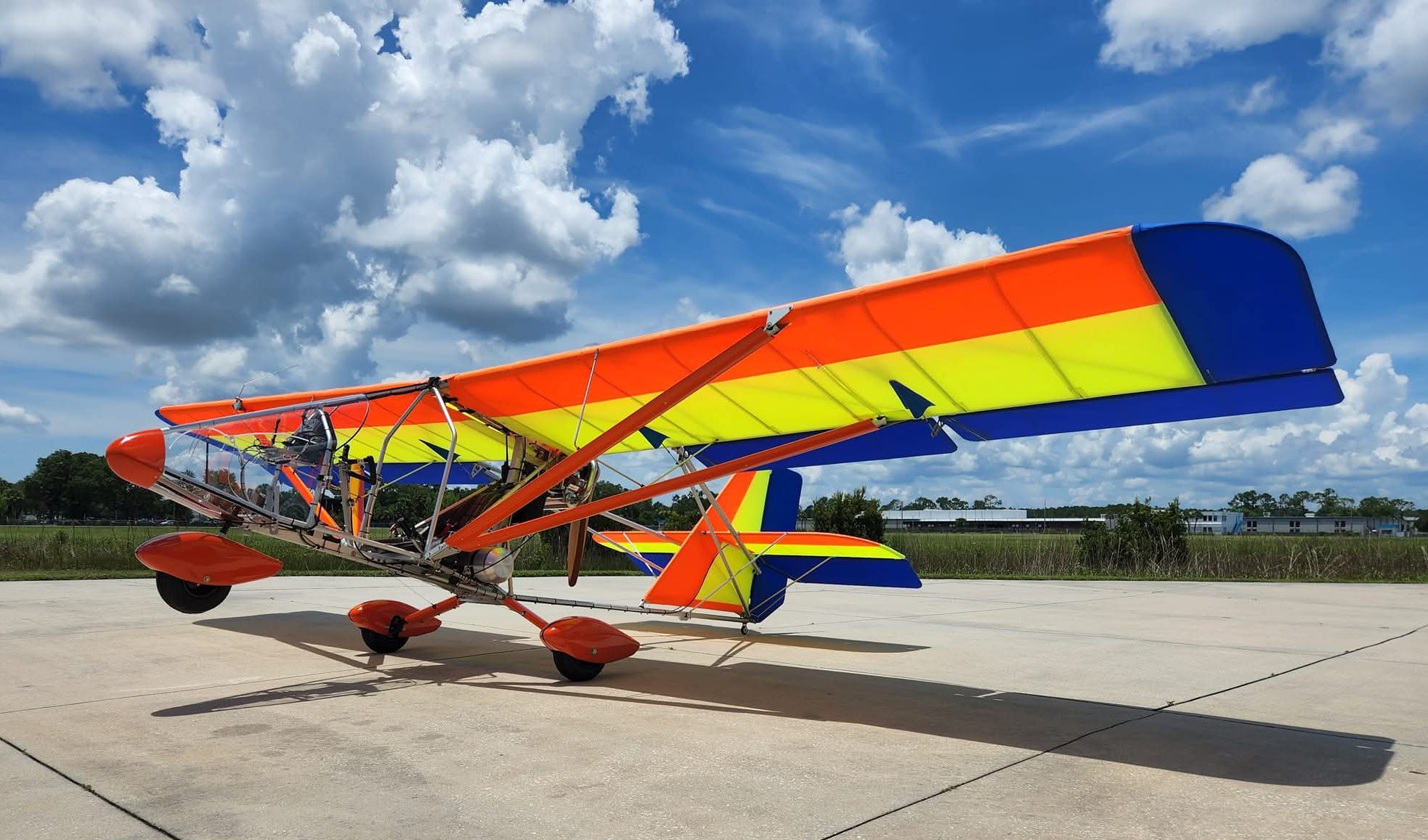
Going All-Electric
The electric version of the Aerolite 103 made its first flight three years ago, but there’s now renewed interest in the little guy thanks to the likes of Electrek and social media. It caught my attention while I talked with people at EAA AirVenture Oshkosh 2025 about what’s hot in ultralights.
As a quick reminder, ultralights fall under Federal Aviation Regulation Part 103. This regulation states that an ultralight aircraft must have just one seat, cannot weigh more than 254 pounds (excluding floats, if applicable), cannot have a top speed greater than 63 mph, and cannot carry more than the equivalent of 5 gallons of fuel. Other considerations include a limit to daytime flight only, a prohibition on flying over populated areas, and a limit on flying in controlled airspace without prior authorization.
Meet all these criteria, and congratulations, you can fly your aircraft – and do so without formal training. Ultralight aviation has long been the friendly entry point into flying for new enthusiasts, and a nice and easy way to fly for experienced aviators.
Ultralights work great for rural cross-country flights. You can fly an ultralight across America within these rules, so they sound limiting, but there’s so much potential. Some Aerolite 103 pilots are known for making seriously long trips in their little planes. The Aerolite EV-103 (video above) is unlikely to be flown over multiple states, but it sounds like a fun way to spend a little bit of time on a great day.
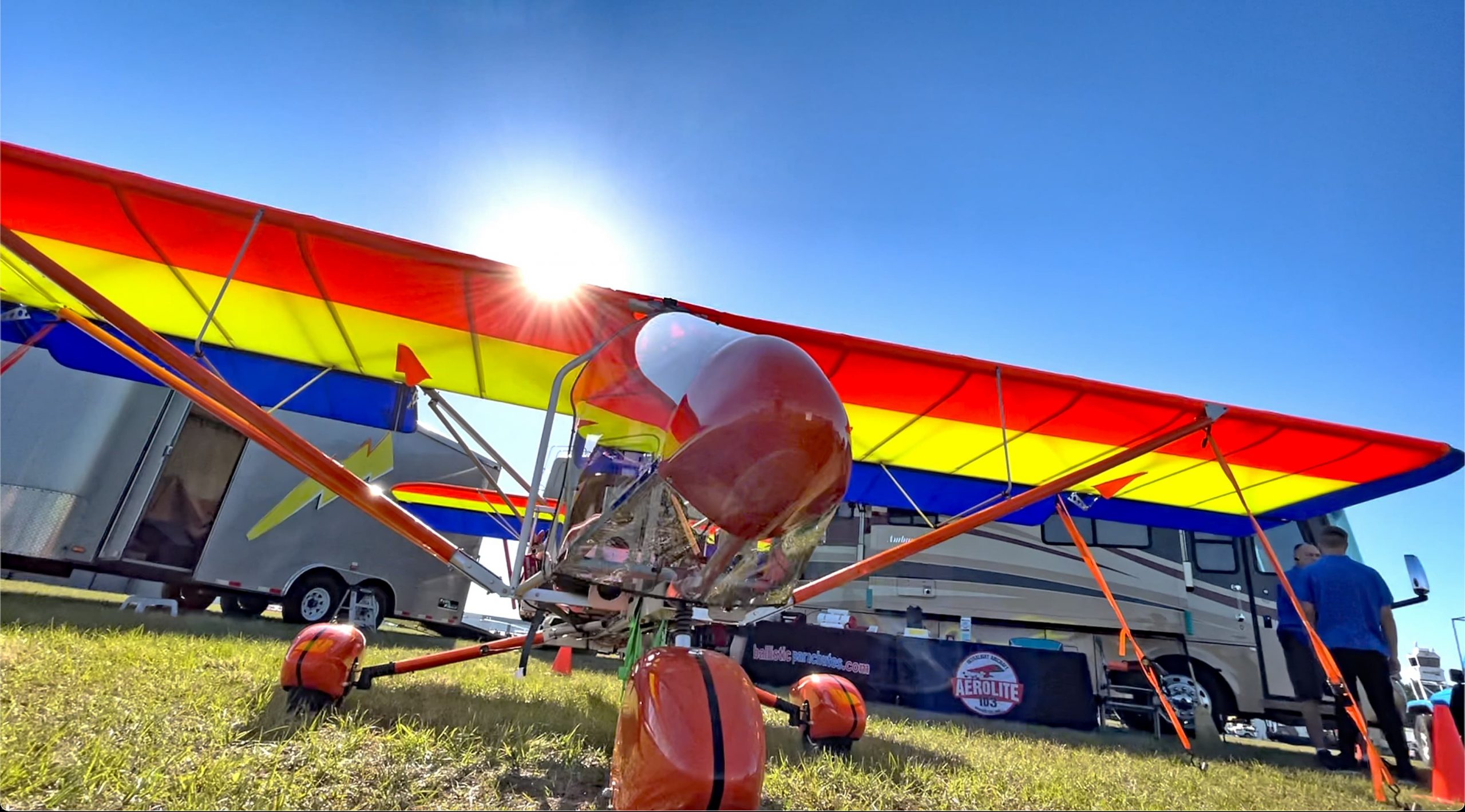

The Aerolite EV-103 is the same aircraft as the Aerolite 103, but with the gas engine removed and a battery tray installed. The tray holds two to four Samsung 30Q lithium battery packs, which power a 30 HP electric motor. U-Fly-It says that each battery is good for 10 minutes of flight time, meaning that four batteries get you to 40 minutes. As U-Fly-It notes, this assumes that you aren’t doing lots of take-off runs and aren’t trying to do high-power cruises. Push the system hard, and you’ll drain the batteries faster. U-Fly-It notes a cruising speed of 40 mph to 45 mph, but you can bump that up to the 55-knot legal limit if you don’t mind sucking down more juice. A whopping 40 minutes doesn’t sound like a long time, and it isn’t, but it’s actually 20 minutes better than most eVTOLs that cost more than twice as much money.

U-Fly-It says the power system includes a 72-volt DC brushless motor with 25kW of peak power, and up to 10.4kWh of stored energy. The drive system weighs 30 pounds without batteries, 101 pounds with two batteries, and 173 pounds with four batteries. The batteries take up to two hours to recharge. The rest of the aircraft is a standard Aerolite 103, which means an anodized aluminum structure, a two-blade prop from Tennessee Propellers, a steerable nose wheel, a panel, and more.
Won’t Cost You $100,000

Pricing seems reasonable for this category. If you’re willing to wrench, you can get the airframe in a quick-build kit for $17,950. The two-battery powertrain adds $10,376. If you want four batteries, the price goes up to $17,102.
If you’re not interested in building your own plane, you can buy the two-battery model ready to fly for $32,326, and up to $39,052 if you get the four-battery model. For comparison, the closest Aerolite 103 gasoline equivalent will run you $29,354, ready to fly.
The ultralight pilots in our audience will be quick to point out that you can get an all-electric paramotor for well less than $10,000, and this is true! However, if fixed wing is your thing, the Aerolite EV-103 appears to be a winner. U-Fly-It markets the plane as “perhaps the first viable all-electric fixed wing ultralight aircraft.”

Indeed, this is not the first all-electric ultralight, but as U-Fly-It hints, a lot of companies announce electric planes, build a couple, and then fade from the radar. Others have built electric ultralights by marrying electric motorcycle drivetrains to their planes. U-Fly-It has been around for a while and, as I noted above, the EV-103 isn’t breaking new ground, but electrifying an existing design.
I like the idea of this little plane. Sure, it can’t hover and doesn’t look like a spaceship like the eVTOLs do, but at one third of the cost, I think these are more true to the spirit of the ultralight. While no training is required to fly an ultralight, I recommend getting at least some instruction. Flying is extremely fun, but it can also end your life if you are not careful. Whatever you fly, have fun!
Top graphic image: U-Fly-It Light Sport Aircraft









Question from someone whose knowledge of aviation is limited, and of ultralights is non-existent:
Is there a reason for using a pusher propeller? With the freedom of electric drive, wouldn’t a conventional propeller position in clean air be more efficient?
I’m half Polish, so I’m perfectly capable of throwing myself at the ground without getting into an airplane.
Looks fun, though.
It’d sure be nice if/when those surfaces can be covered in solar skin to top off the batteries while in flight and during rest stops away from charging ports.
Pretty sweet, and batteries are only getting better over time.
I totally agree the 103 is the one to buy if you’re silly enough to buy one. Sure you can get one and fly it without any training. Doesn’t that seem like a bad idea to anyone else? I noticed the ultralight is ultralight so what are the weight limits because I ain’t ultralight. One seater so even if you want you can’t get training. As for the EV I assume there aren’t a lot of charging stations so that cuts range in half because you have to get back, get back, get back to where you once belong. Do you disassemble it take it home and charge it? Or are there ports you park it and leave it charging? I truly have no idea how this works but probably too afraid, I mean smart to do it.
This is pretty damn awesome. The fact that it is so quiet, means you can probably get away with taking off and landing somewhere other than an airport, without drawing too much attention.
From the article I think that is required no flying over populated areas or in controlled airspace. Pretty sure that means nowhere near an airport.
Oh interesting! So you aren’t even allowed to flying in and out of airports. If this was a gas engined model I am sure lots of neighbors would be riled up. But with the quiet electric motor hardly anyone would notice.
On a tangentially related topic… I’ve recently rediscovered RC flying.
There are more regulations to fly a scale facsimile made out of a drink cooler than there are to fly the Aerolite.
I had to register with the FAA as a drone pilot and I had to register my aircraft. Now I can only fly in specific areas that are controlled by recognized clubs, which means member dues and also AMA dues.
If I want to be able to fly my FOAM Carbon Cub anywhere else, I need to add a GPS tracker so that the FAA knows it’s airspeed, altitude, location, and my info. Prior to flying, I also need to check to see if I need to request approval to fly FROM THE FAA ITSELF.
Meanwhile, I can just buy an Aerolite tomorrow and fly it.
Make this make sense!!
Really? My brother used to fly RC planes and gliders and I don’t remember him having to register with anyone. Is this really enforced?
These regs came into effect within the past few years, from what I’ve read, thanks to panic over Chinese-made multirotor drones.
I don’t think the county sheriffs will tattle on me to the FAA if I’m flying where I shouldn’t but if there’s one thing I know about aviation, it’s that you don’t mess with the FAA.
Fines are 5 digits range for non-compliance. I’d be bankrupt in an instant.
Yeah but without registering it and adding GPS tracking how will they find you?
Karens. That Carbon Cub the OP has is bright yellow and just over 1 meter wingspan. It’s hard to miss. Which for a RC plane marketed as a beginner plane is the point.
The additional regs came in over the last few years, and not just due to panic but due to lots of folks grounding firefighting aircraft by flying over fires to get that sweet sweet content, among other things*.
There’s always been substantial regs to fly RC aircraft on the level–just about any club field required them due to liability. Which doesn’t mean that there aren’t lots of folks who have, and continue to fly without.
*the other things being the contentious and lobby driven BVLOS UAS FAA rules that have caused many sport enthusiast groups grief.
That doesn’t really explain why scale model aircraft are lumped together with drones.
It’s always multirotor drones flown by idiots, like the guy who flew his camera drone into that CL-415 in LA.
I sort of hate to use the term, “Model aviators,” because it sounds SO pretentious, but the people flying scale models have been doing so safely for decades. They aren’t the ones flying them in the same airspace as water bombers.
In my brief time flying model planes the event that was always brought up when it was time to pay all the hefty membership dues was this one: https://www.deseret.com/1990/10/1/18883868/model-plane-gashes-blimp-forces-emergency-landing/ so no, not always safely for decades. Otherwise the insurance wouldn’t be so difficult.
But drones *have* caused the FAA to take major notice of all radio controlled objects in the air and the incidents with drones make rule making easy. Really though, the big problem long term is going to be the BLVOS UAS rules. The lobby (mostly Amazon) really, really want to fly all kinds of these aircraft but to do it the way they want to they need absolutely everything moving in the sky to id itself and give position and motion data. It’s only going to get worse for people who’s hobbies are in the air.
That was 35 years ago, three and a half decades ago.
Now tell me how many similar events that have happen since involved drones, and happened within the past 10 years. I bet it’s nearly all of them.
I’m not saying model aircraft shouldn’t be regulated, but it’s simple laziness for Congress to lump them in with drones.
Only if you live in an HOA subdivision. I kid
Karens can pop up anywhere.
That’s why I’ve found myself gravitating toward under 250 gram models. Those I can fly in my backyard without anyone saying boo. Or stuff that I definitely need to take to the club to fly like EDF’s and warbirds.
I’d highly consider a Radiomaster TX16 4 in 1 radio. That opens up a lot of cheap sub 250 gram planes that can be flown a lot more places. Those can be surprisingly fun once they’re bound to a real TX instead of the toy one they come with.
The local high school is a FRIA site, thankfully. I joined a club to try that out but I haven’t had a chance to go to the club field yet. Life is getting in the way.
if I decide to keep investing, I’ll get a nice transmitter that I can bind to multiple aircraft.
Machines that kill their operators when they are used unsafely fundamentally require less regulation, due to human nature (and natural selection).
I grew up very poor and my parents always made me save some of my money to buy my first car. When I was 16 we were at a pick your own strawberry/peaches/apples farm (don’t remember) and after a bit of wandering found two ultralites for sale for 500 each similar to these but with a rotax 2stroke I believe. I begged and pleaded with my parents to let me buy it with my own money but they never relented. About a year later I find an rx7 I want to buy, drive it home during the test drive to get the cash to buy it and again my parents balk and refuse to let me buy it. By the time I turned 18 I made sure I had full control of my money and intentionally bought a manual so my parents couldn’t do anything about it once it showed up.
To this day I wonder what my life would be like if my first vehicle was a plane, a sports car, and if I’d still be alive.
It looks like they could fit 2 more batteries and still squeak in under the ultralight limit. That might effect how heavy the pilot could be, but if the packs are removable, the number used could be purchased/adjusted to keep it under a GVWR depending on specific pilot weight. Unless it’s an issue of balance? Anyway, it’s pretty cool.
It probably would be an issue with wing loading. When you’re this light pilot weight, and any payload, makes a big difference in the way the plane flies. If you did the math though, you could probably diy your way to the right loading and maximum capacity.
If I am to heavy and it doesn’t get off the ground
1. Do I still need to adhere to the weight limit
2. What does the ride feel like if you don’t get off the ground
Is this a Zen koan?
It didn’t say it the weight of the pilot was included? If it was I could not even put gas in it.
Would it be a thing to have thin-membrane solar panels on the top of the wings to give a tiny bit of extra juice…?
It wouldn’t make an appreciable amount of difference in a 40 minute flight. Maybe 30 seconds.
This sort of price difference is low enough that I think that even a fixed wing curious PPG pilot would give this a look. If I had the space, I’d be really tempted to get this and some training (definitely don’t want to be one of those crashes from thinking no license and no training required are the same thing).
Amen
i want one.. like a lot. i just have no idea where i would use this thing. i also hear people die in these like all the time.
The dying part is the tough sell.
I am pretty sure Flying one of these without training causes anal leakage. It would be crapping your pants but your butt cheeks would be so tight leakage would be the proper term
Yeah, probably best to cut these details out of the marketing brochure and bury them in the fine print on the last page of the manual.
Less of an issue for fixed wing ultralights but it still can be an issue.
That being said most planes in general aviation are very very old and making much less than their original horsepower. I did most of my training in a De Havilland Beaver on straight floats and in a 1964 Cessna 150D. Aluminum does not have an unlimited fatigue cycle unlike steel, and most planes you’ll deal with are made of aluminum stressed skin construction. Sure they have to be meticulously maintained legally, but there’s only so much one can do, and the more rare the bird the more likely someone not knowledgeable about the quirks will end up working on it and likely not noticing danger signs (like what happened with the Chalks Mallard when it lost a wing in flight).
I’ll almost certainly get into ultralights once I settle down as flying standard category or experimental powered aircraft is a big expensive PITA.
Makes the Wright brothers look like pikers.
I think this plane is great, and wonder about the possibilities of a sort of assisted glider electric ultralight someday.
As for the Mercedes math about PPLs… I went through a lot of the same. I attended Oshkosh nearly every year in the late 80s/early 90s with my grandpa who couldn’t pass a medical anymore after a bad car crash, but used to fly float planes all over norther MN. The license still got us onto the flightline though, which for a kid was amazing. Of course I knew I desperately wanted to fly some day and 100% had my heart set on a 195, and I’ll take mine in polished aluminum with maroon stripes please.
Of course as I got to the age where I could seriously start thinking about it the costs were completely insurmountable. The Sport license introduction was great, but still not quite enough. I live in too dense of an area for ultralights to be a real possibility. So… I ended up getting my paragliding license. Still not cheap, but I can get lots of hours in the air, and with more skill, and the right weather, could outrange an ultralight. I still dream of that 195 though…
Totally with you on the round engine thing… but I’d like two of them fitted to a Beech 18 in yellow with black stripes. Alas, the transfer of generational wealth has already happened and I don’t do the lottery as that kind of luck doesn’t favor me.
Would settle for a Luscombe. Got a few hours in one back in the ’70’s, all metal is the way to go.